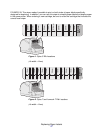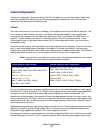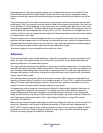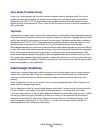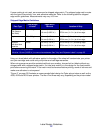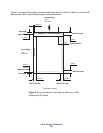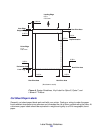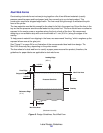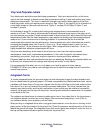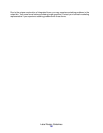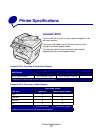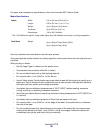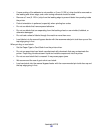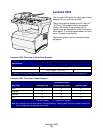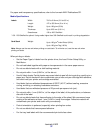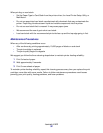
Label Design Guidelines
25
Vinyl and Polyester Labels
Vinyl labels work well within specified design parameters. Vinyls are heat sensitive, so the liners
need to be thick enough to absorb excess heat and prevent melting. A total strip matrix may cause
adhesive contamination. Thin liners or weak pull strength may lead to labels peeling off the form
inside the printer, which will require printer servicing. See “Figure 3” on page 22 for an illustration of
a vinyl label design for Optra plus printers and “Figure 4” on page 23 for Optra S, Optra T, and
Lexmark T printers.
As illustrated on page 23, a leading and trailing edge stripped area is recommended to be a
maximum of 3 mm. This area is recommended to prevent adhesive being close to the edge, which
can contaminate your printer. Certain materials used in label construction, which have liner face melt
temperatures lower than the fuser temperature, may require the leading and trailing edge stripped
areas to be 1.6 mm maximum due to feeding problems. It is preferred that the liner face be
constructed with material that can withstand our fuser temperatures, which eliminates the need for
changing the stripped areas from 3 mm to 1.6 mm. If a 1.6 mm stripped area is used, it is very
important that the 1.6 mm tolerance be held tightly. With a stripped area of less than 1.6 mm, it is
highly possible that adhesive contamination will occur.
Vinyls are non-absorbing, which leads to toner build-up in the fuser that requires special
maintenance. Look under “maintenance procedures” in the index for specific information about
maintaining your printer. Vinyls may require a topcoat to ensure good toner adhesion.
Polyester labels are less heat sensitive but are also non-absorbing. Backings for polyester labels can
be thinner, but requirements for coatings and cleaning are similar to vinyl labels.
It is recommended that when you run vinyl labels, you install a special oil fuser cleaner,
P/N 99A0725. When you order a new cartridge, be sure to order the cartridge that will include the
correct fuser cleaner.
Integrated Forms
To create integrated forms, the converter uses hot melt adhesives to apply the label adhesive and
liner to a base material (generally paper). Oil bleed, recognizable by a discolored face sheet, can be
a problem with these forms. Oil may also migrate from the top of the liner to the back surface of the
liner while it is on the roll, before the conversion process takes place. The forms created from this
material may then be slick, and the pick mechanism of your printer may be unable to successfully
move all the sheets from the tray into the printer. Jamming and misfeeds increase when oil is present
on the back of the liner.
The adhesive on these forms is commonly patterned on two or four sides (that is, the forms have a
non-adhesive border on either two or four edges). We recommend designing a 1 mm (0.04 in.)
non-adhesive border (zone coated) on all four sides.
When printing on integrated forms with a long grain base material, orient the form in the tray so the
paper portion of the form feeds into the printer first. Orient the pressure sensitive portion of the form
toward the portrait left edge. For integrated forms with a short grain base material, orient the form in
the tray so the pressure sensitive portion feeds into the printer first.



